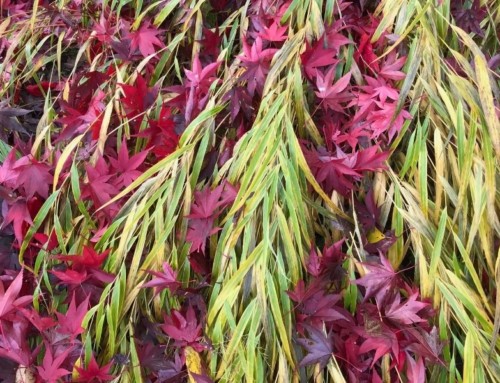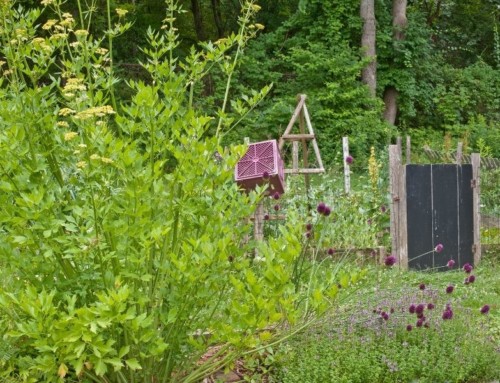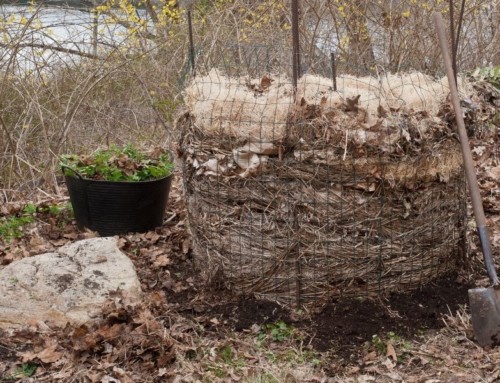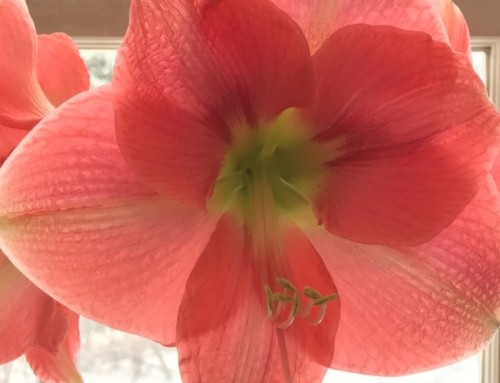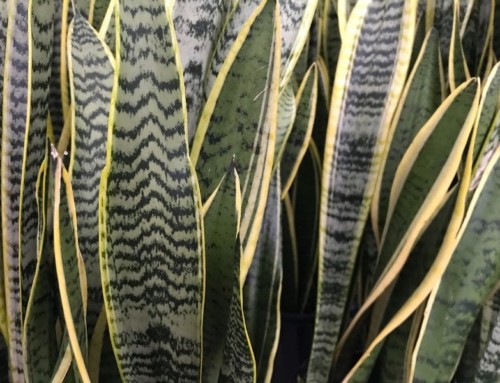It’s almost December and there’s still storm damage everywhere I Iook. July’s hurricane and the following week’s tornado toppled hundreds of trees when they slammed into the mountain behind me.
It’s been snarling chainsaws ever since and now that it’s fall, woodstove smoke is in the air.
Maybe you’ve had trees come down too, or you’re thinking of cutting one uncomfortably close to the house.
Are you ready to finally admit that the half-dead spruce in the front yard is never going to get any better looking?
Can I convince you cut the gigantic invasive burning bush in your garden that has seeded all over creation? And replace it with native shrubs?
I’ve written about the ecological benefits of dead and dying trees (Looking Across the Fall Line).
Once you’re done cutting firewood and making brush piles, chipping or leaving branches to decompose on the forest floor, what then?
How do you deal with a stump where you’ll be looking at it up close and personal for years? Without resorting to disruptive (and expensive) stump grinding or toxic chemicals?
Garden writer, podcaster and radio host C.L. Fornari (aka The Garden Lady) came up with a fun and funky way to add a colorful vertical element to her garden (photo above).
A flowerpot sitting on a stump looks lonely (not to mention trite). So she uprighted chunks of trunk, creating an ensemble.
Here’s how
- Arrange an odd number of tree sections – 3, 5 or 7 (after 7 nobody can tell) of different sizes and lengths, in an asymmetrical grouping. “Plant” them so they won’t tip over.
- Screw gun Smart Pots to the top of stump and logs, roughly size-matching pot to perch. (Smart Pots are non-woven chemically inert fabric growing pots, widely available online and at garden centers).
- Wrap bark wire (bark covered wire, found in craft and floral supply stores) loosely around the pots and the top of the wood sections. You could also use flexible bittersweet, grape or honeysuckle vines.
- Stuff bark chunks under the bark wire to conceal the fabric pot and make the whole thing look natural.
- Fill pots with potting soil and plant away. Cascading plants and dangling vines are especially effective.
- Stuff the bags with evergreen foliage, red-twig dogwood branches and winterberry boughs in winter.
- The ensemble will last for years, attracting woodpeckers as insects burrow in. When it rots, roll the logs away and install new ones.
Let’s Embrace Rot
How do you embrace rot (or speed it up), returning nutrients, organic matter and microbial life to the soil, when it’s in the garden? Embrace the process and plant it up.

At Garden in the Woods a hollow tree full of “stump dirt” was planted with and surrounded by woodland plants that will grow to conceal the stump as it decomposes.

Score a low-cut stump with a chainsaw as they did (photo above) at Innisfree Garden in Millbrook, NY. Channels hold water, accelerating decomposition.
See how (and where) mosses, lichens and even tree seedlings colonize the rotting stump. Different plants grow in different places, depending on moisture and light.
You could cut designs or initials. Or hollow out and plant the center, incising “rays” for a sunburst and see how moss and lichens highlight your design over time.

A tree with healthy roots will keep trying to grow by sending up shoots. If you cut the stump neatly flush, it will keep sprouting. Removing sprouts year after year gets old fast.
I do let oaks in my back yard keep sprouting, though, because oak leaves are such an important larval food source. I just think of them as shrubs and snip when they get too tall.
If you whack away at a stump and really make a mess of it, it dies faster. Plant thickly around it and let it melt away.
I haven’t tried using Epsom salts, which draws out moisture, killing the roots, without toxicity to surrounding soil. Here’s how it works.
Kill Those Roots
Adding too much soil to make garden beds under trees can kill the trees. But if you want to kill trees it’s another story. And a great excuse to make a new garden.
As I found out last summer when I did convince several clients to cut down big old burning bushes, their roots occupy a lot of space underground.
I couldn’t get through the mat of fibrous roots no matter how hard I jumped on my sharp, heavy duty shovel.
With patience, though, the soil can be made workable. Deprive roots of air and water and they will die and decompose, enriching the soil and making it workable again.
Lay down cardboard, pile a foot of good garden soil on top and you can plant right into it. Or, if you have time and wood chips, lay down a thick layer and wait a year.
Let there be rot.

